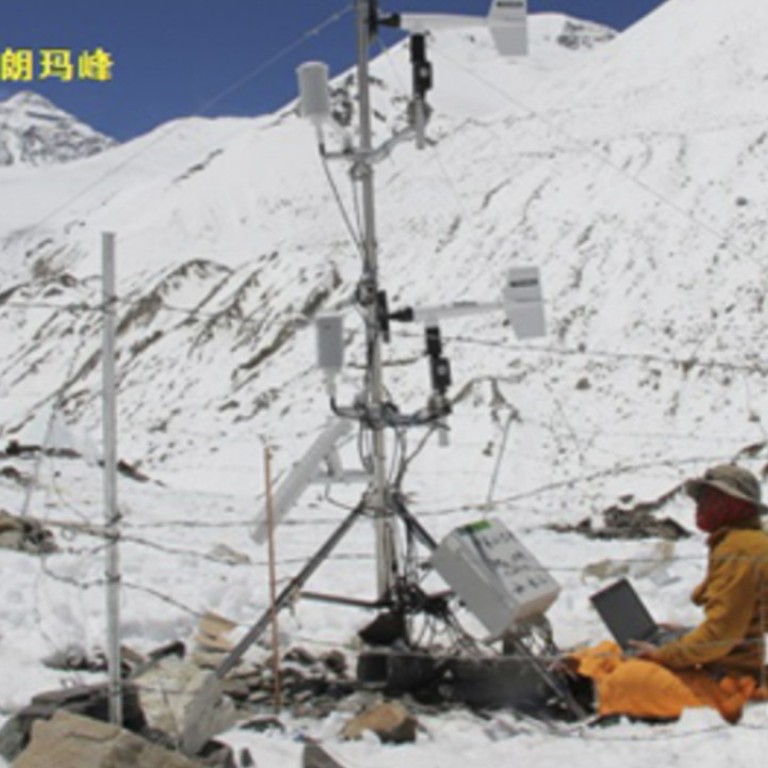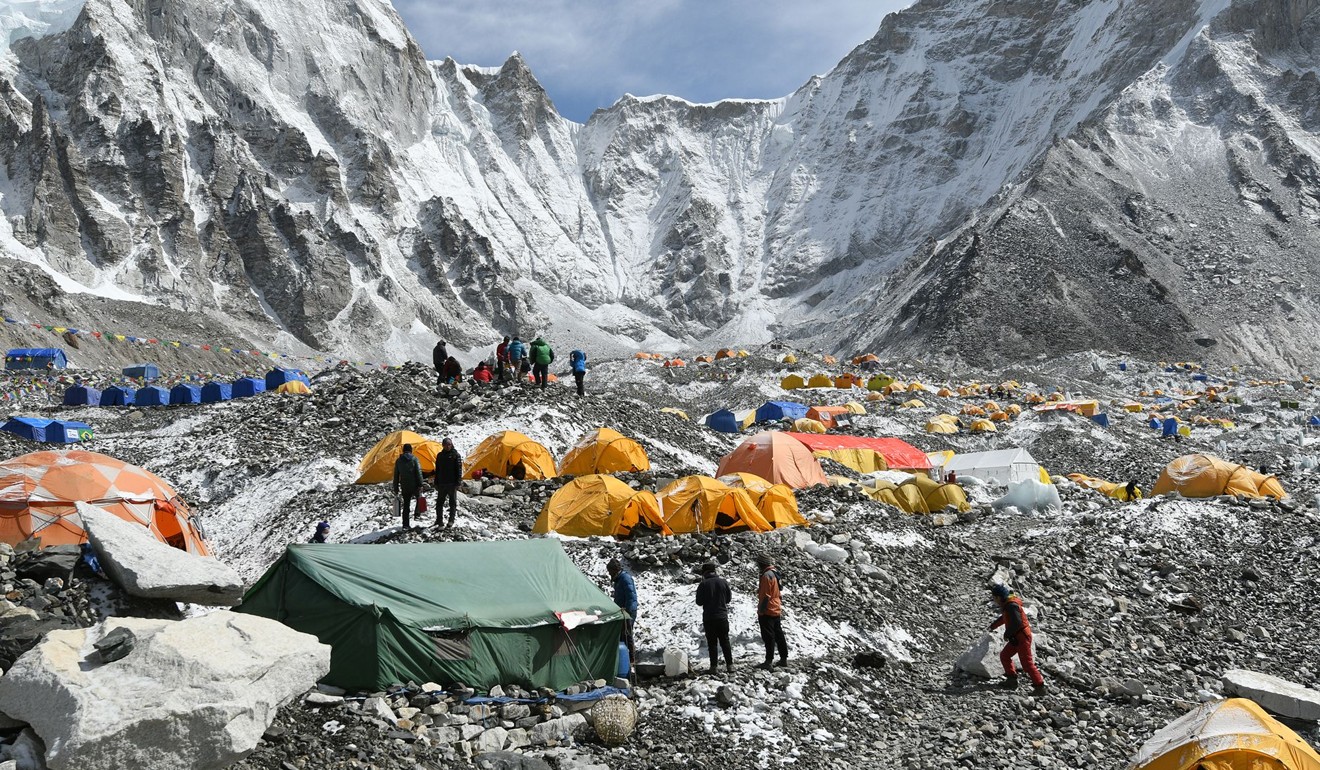
Does Mount Everest’s record wet summer point to a ‘profound change’ in the Earth’s climate?
Rain and snow are falling on the world’s highest peak at twice their normal rates at a time of extreme weather globally, Chinese scientists say
In an extraordinary event for the world’s highest peak, rain and snow are falling on Mount Everest this summer at twice their normal rates, reflecting a global trend of extreme weather and perhaps even a “profound change” in the Earth’s climate system, scientists have warned.
“It has been several months,” said Wang Zhongyan, executive director of the Qomolangma Atmospheric and Environmental Observation and Research Station, located on the giant mountain’s northern slope.
“We have not seen the blue sky for a day. The sky is always grim. The temperature is low. This is quite unusual.”
Deadly heatwaves could make China’s key food production region unlivable, MIT study says
Working under the auspices of the Chinese Academy of Sciences, Wang and his colleagues live and work in the station’s headquarters more than 4,000 metres (13,123 feet) above sea level in Tibet’s Zhaxizong prefecture. Qomolangma is the Chinese name for Everest.
Part of their work is processing environmental data collected at various high-altitude observation sites below Everest’s summit, which extends to 8,850 metres.
Wang said precipitation recorded during this summer’s rainy season so far has been “100 per cent” greater than the long-term average. He declined to provide exact rain and snowfall figures pending further scientific analysis.
“We must treat the results with absolute care and prudence,” before releasing the information to the public, he said on Wednesday.
Heatwave causes record number of deaths in South Korea
High precipitation totals on the north side of Everest are unusual because any moisture carried by wind from the Indian Ocean into the Himalayas tends to fall in south-facing “rain shadow areas” in countries such as Nepal and India.
Only a small amount of moisture would be expected to make it over Everest onto the Chinese side, which is typically sunny even during the wet season.

But this year is shaking up preconceptions about regional weather trends.
“Our speculation is that the monsoon activities over the Indian Ocean this year might have been abnormally strong,” Wang said.
“Otherwise it would not be able to bring so much water over the mountain. We are still waiting for data collected from the south [of Everest]. It will give us a better picture of what is going on,” he said.
Government weather authorities in Nepal and India did not respond to questions.
It’s so hot in Switzerland that helicopters are airlifting water to thirsty cows
The unusually wet weather could pose a threat to the region’s residents.
Given the loose, dry rocks and soil in the area, “a sudden increase of water can increase the risk of natural disasters such as mudslides,” Wang said.
But if the wetter trend persisted, it might have positive long-term environmental effects locally, he said. It could mitigate the negative impact of the retreat of glaciers on fresh water for irrigation and sustaining plant and animal life.
“The more snow, the slower the ice retreat,” Wang said.
“Plants and animals may also benefit. In the long term a wetter weather can help improve the local ecological system.”
As asphalt melts and dogs don shoes, Europe wilts in extreme heat
But Yu Wusheng, a researcher at the Institute of Tibetan Plateau Research, said the wetter trend was disturbing.
“Recently we have received reports of some strange events on the Tibetan plateau. For instance, some areas were hit by large-scale snowstorms in July. This is absolutely abnormal,” said Yu, who studies Tibet’s water cycle and ecology on behalf of the institute, which is part of the Chinese Academy of Sciences in Beijing.
“I am afraid these are not isolated local events but part of a profound change in the climate system sweeping across the planet.”
He suggested that the big ice melt at the Earth’s poles could be disrupting normal weather patterns.
The icy layer of the North Pole has been melting at an alarming rate in recent years. Warm weather also has hit Antarctica, where a chunk of ice as big as Shanghai recently broke away from the continent.
“The melting at the pole areas might have set off a chain of reactions,” Yu said.
Coordinated response needed to fight threat of climate change
The world is seeing a rash of extreme heat events.
A heatwave brought record temperatures of more than 30 degrees Celsius to Europe’s arctic in July. Parts of the continent have recorded temperatures close to 50 degrees. Large-scale wildfires are ravaging nations from Greece to Sweden.
In Britain, hundreds have died from heat illness, according to local media reports.
Australia’s most populous area is being hit by the worst drought in five decades. Local authorities have encouraged farmers to kill kangaroos as they compete with livestock for water.
In the US, the state of California is fighting the biggest wildfire in its history. The California blazes and other big fires in western America have generated so much smoke it can be detected over almost the entire country, the National Oceanic and Atmospheric Administration said.
In Japan, the worst heatwave in more than a century has pushed the temperature this summer to more than 40 degrees, killing dozens of people.
Greece and California fires, record heat in Japan. What’s the connection?
“The global climate system is showing some uncommon patterns this year,” Yu said.
“There is flooding in areas which should be dry and drought in areas that are usually wet. We should stand on guard and watch out for an abrupt change of climate caused by the global warming.”

But Gao Xiaoqing, a researcher at the Northwest Institute of Eco-Environment and Resources with the Chinese Academy of Sciences in Lanzhou, Gansu, cautioned against jumping to conclusions because of the recent events.
While snow and rain in the western and central parts of the Tibetan plateau exceeded usual amounts, the eastern area was drier, the specialist in catastrophic atmospheric events said, citing the latest Chinese government data.
“Extreme weather happens every year. Sometimes it happens in this country, sometimes another.
“Sometimes there are more of them, sometimes less,” he said.
“The frequency goes up and down like waves. A sudden increase of precipitation at a certain region is not unusual.”
Japan’s deadly heatwave now classified a ‘natural disaster’
Although scientific studies have confirmed that greenhouse gases such as carbon dioxide produced by human activity have contributed to an increase in the global temperature, other factors could be causing the warming trend, Gao said.
For instance, undersea volcanoes that released a huge amount of heat and chemicals into the world’s oceans could significantly alter the temperature and physical nature of the seawater and lead to changes in the global climate system, he said.
They get overlooked because the activity of undersea volcanoes in the past had not been considered in climate change models.
The cause of the recent extreme weather and its relation to global warming and human activity was “open to debate”, Gao said.
Researchers from many different backgrounds, such as geologists, meteorologists, marine scientists and physicists, need to work together closely to come up with a reliable answer, he said.
However, “there is no need to panic.”


